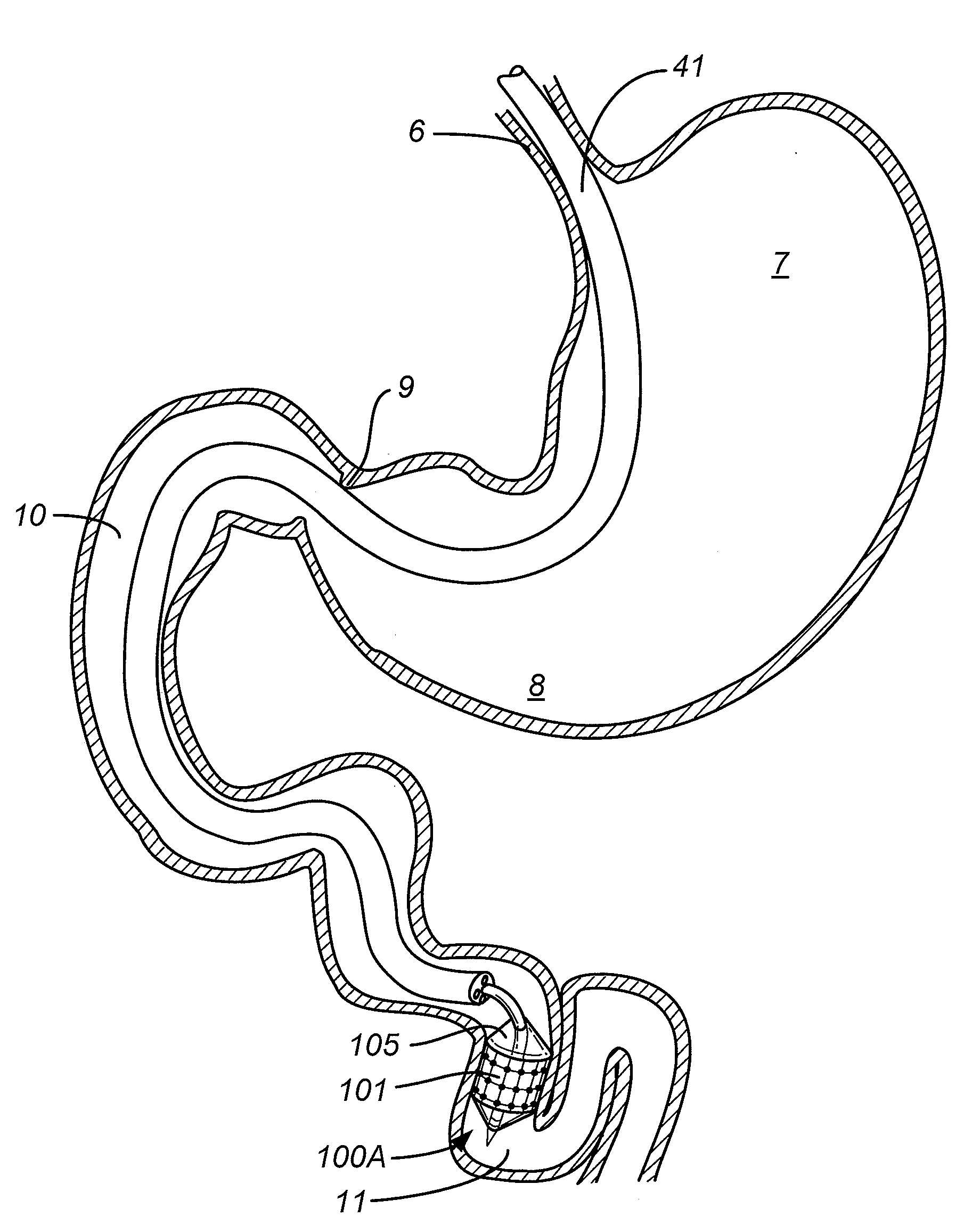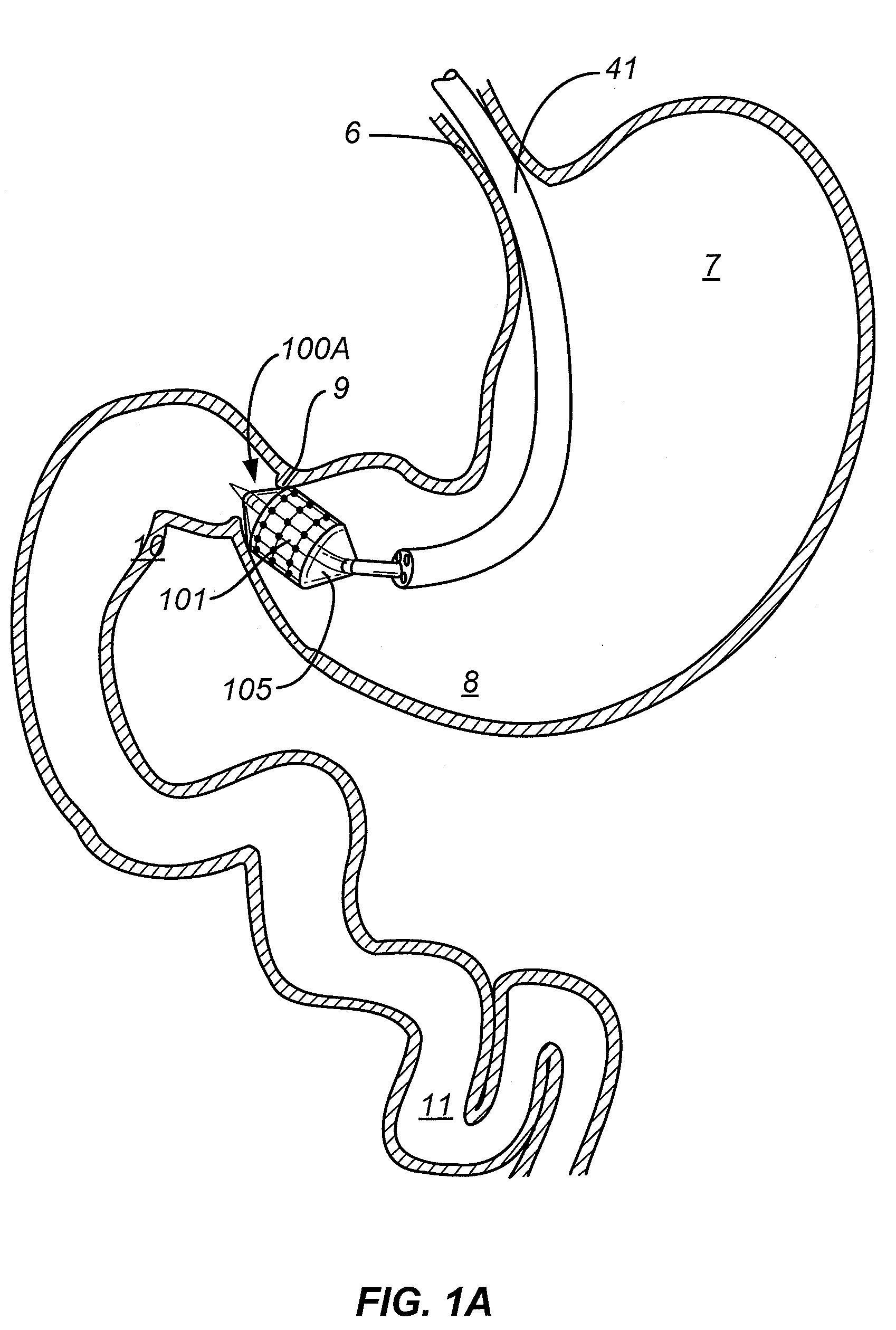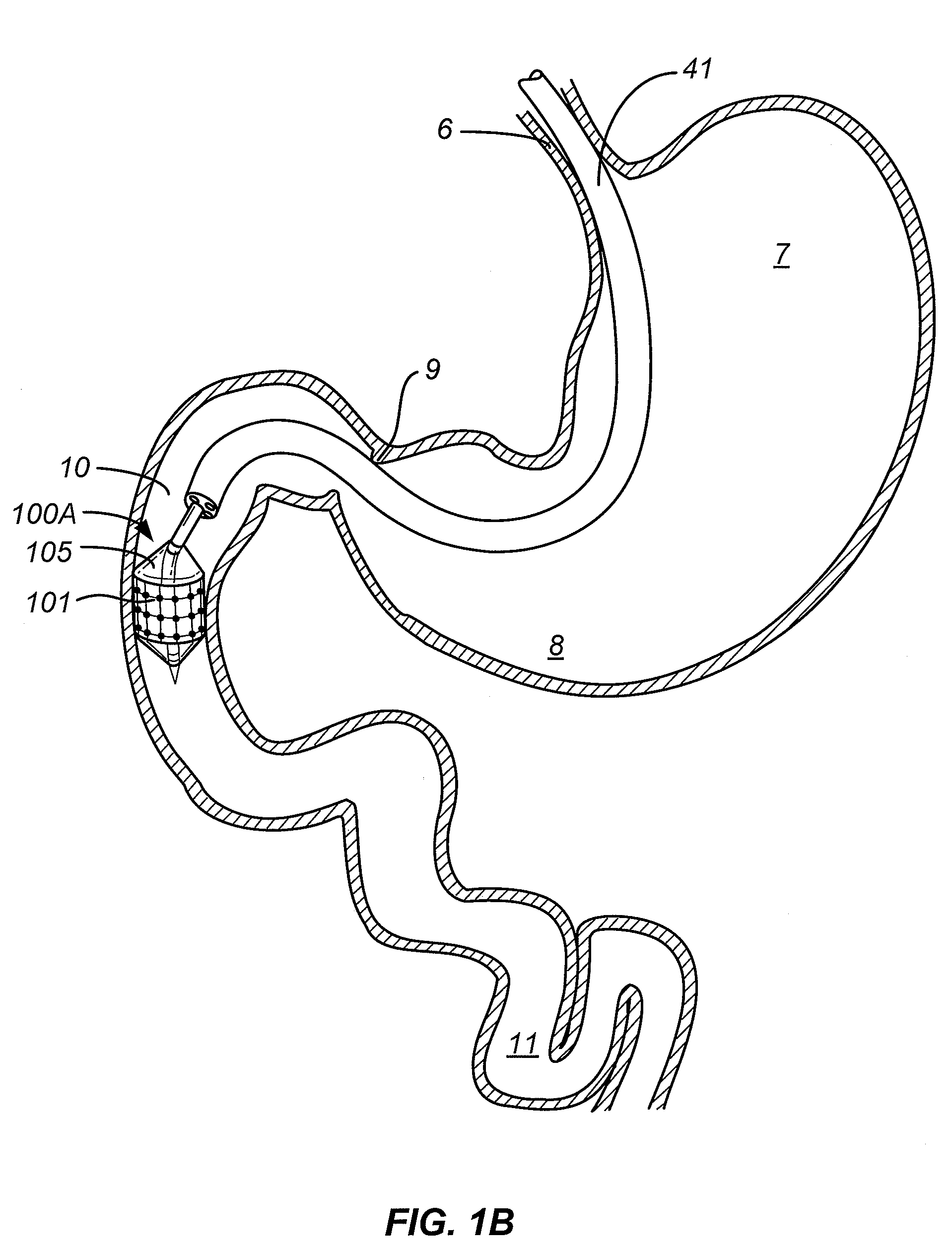Method and apparatus for gastrointestinal tract ablation for treatment of obesity
a gastrointestinal tract and ablation technology, applied in the field of medical devices, can solve the problems of insufficient energy being delivered to other layers, and achieve the effects of slowing down the rate of nutrient absorption, and slowing down the emptying of gastric contents
- Summary
- Abstract
- Description
- Claims
- Application Information
AI Technical Summary
Benefits of technology
Problems solved by technology
Method used
Image
Examples
Embodiment Construction
Ablation in the Gastrointestinal Tract as Treatment for Metabolic Disease
[0088]Metabolic conditions such as obesity, diabetes mellitus type 2, and metabolic syndrome tissue can be treated with an ablative technique applied to portions of the wall of the gastrointestinal tract that has a controlled depth of ablation and does not injure the deeper layers of the organ. Ablation technology represents a therapeutic alternative that has been shown to be simple, safe, and effective in treating diseases confined to the epithelial tissue such as Barrett's esophagus and squamous dysplasia of the esophagus, and such therapy thus holds promise as an epithelial layer-based treatment (and in some embodiments, a deeper layer treatment) for metabolic conditions as well. The inventors have made the inventive realization that the success of bariatric surgery, such as Roux-en-Y gastric by-pass operations may provide a rational basis for an ablational approach to an anti-obesity or anti-diabetic therap...
PUM
 Login to View More
Login to View More Abstract
Description
Claims
Application Information
 Login to View More
Login to View More - R&D
- Intellectual Property
- Life Sciences
- Materials
- Tech Scout
- Unparalleled Data Quality
- Higher Quality Content
- 60% Fewer Hallucinations
Browse by: Latest US Patents, China's latest patents, Technical Efficacy Thesaurus, Application Domain, Technology Topic, Popular Technical Reports.
© 2025 PatSnap. All rights reserved.Legal|Privacy policy|Modern Slavery Act Transparency Statement|Sitemap|About US| Contact US: help@patsnap.com



